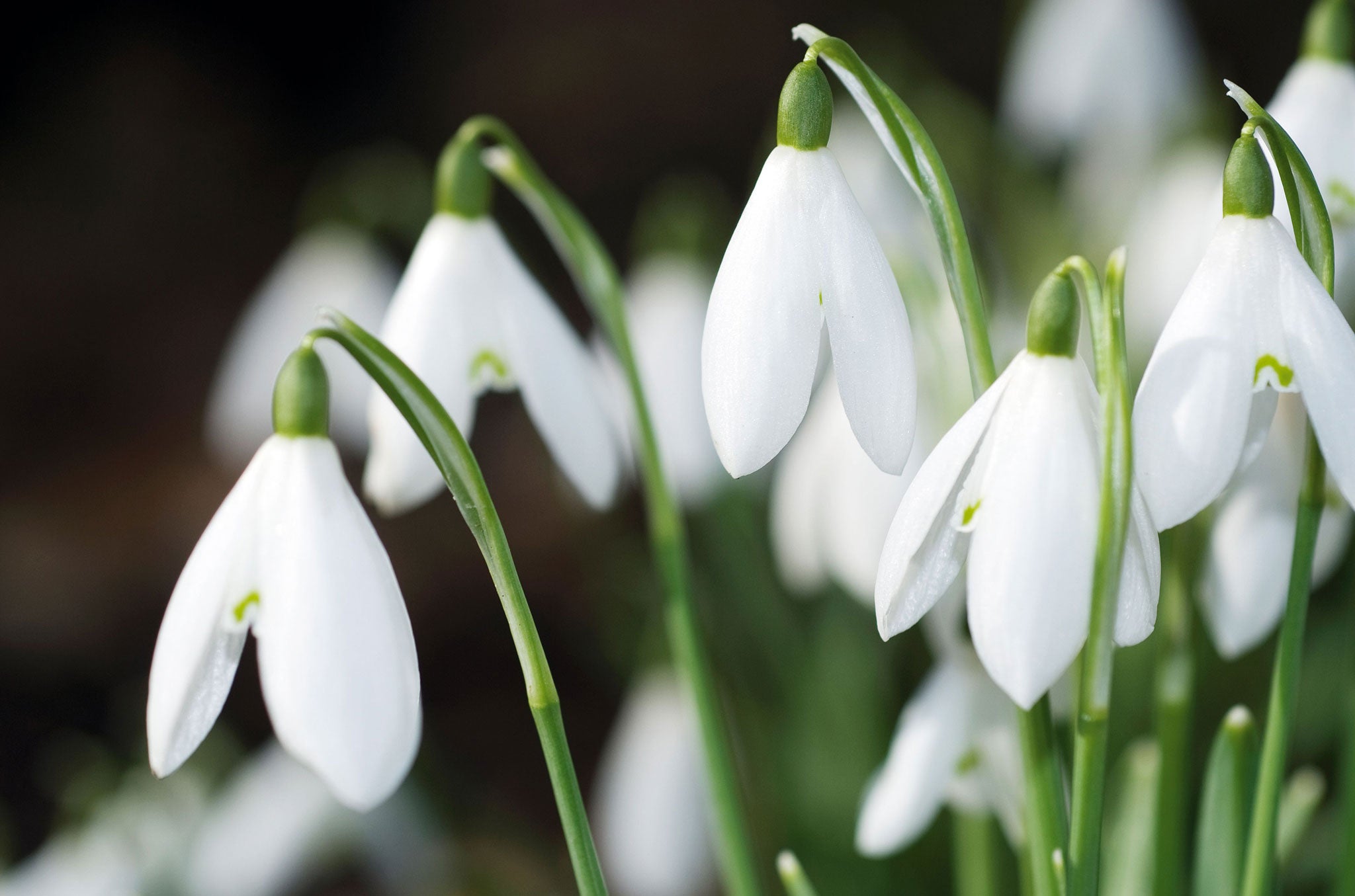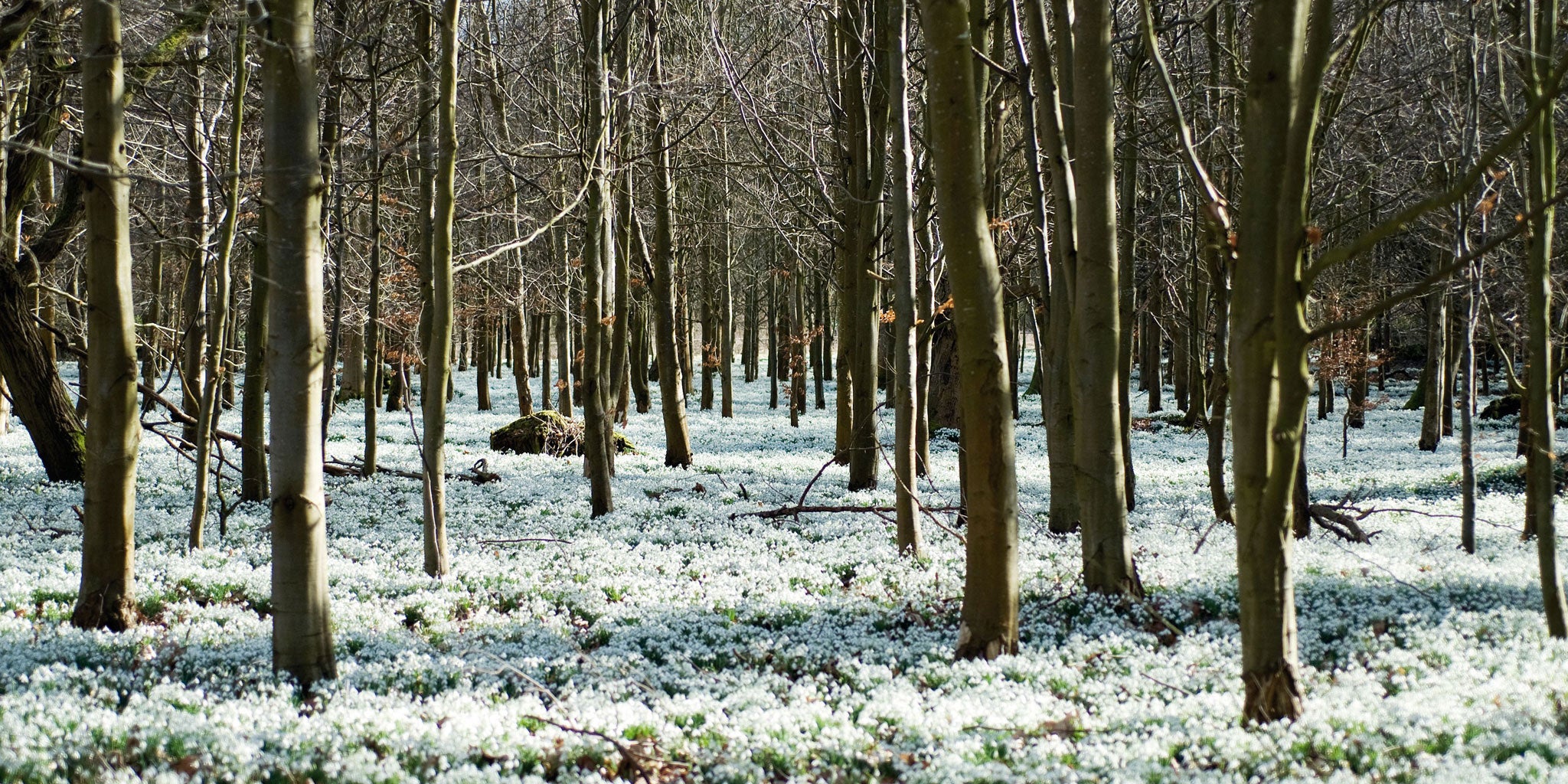White stuff: For mass impact, the snowdrop display at Welford Park is hard to beat
Millions and millions of flowers carpet the wild beech woods there

'First decent day of the year," said the man taking ticket money at Welford Park in Berkshire, where earlier this month, I went to see snowdrops. And it was true. The sun was hot enough to tickle scent from the snowy flowers lining the verges and I staggered up towards the house, eyes closed, the better to take in that unusual, sweet sensation. But I opened them pretty quickly when I got to the bridge across the drive, for the river Lambourn was in full spate, roaring over the weir in a style beyond fierce. Falling in was not an option.
The river divides the grounds into two halves: a wild, wooded area on one side and a more formal layout close to the house on the other. The wild bit is where most of the snowdrops are, great carpets of them pushing through the dead leaves of a beech wood. This is how they look best, massed under tall trees. And to get this effect, nothing is better than the straightforward, common snowdrop, Galanthus nivalis. Though snowdrop fanciers go nuts over novelties, nothing looks sadder than a single snowdrop in a pot, too expensive (and too miffy) to be released from its prison.
I loved the wild bit, as much for its intriguing pattern of leats and channels and narrow, wooden-planked bridges as for its snowdrops. Was the great landscaper Stephen Switzer here in the 18th century, playing with the Lambourn water? Some historians think so, for he specialised in water gardens and had an admirably light hand. "If the Beauties of Nature were not corrupted by Art, Gardens would be much more valuable," he wrote in 1718, by which time the handsome red brick house at Welford Park would only recently have been finished.
On the map you get with your ticket, the area I liked best is discouragingly marked as 'swamp' and must sometimes be flooded completely. But the day I was there, most of the paths were open and you could move over tributaries and drainage channels by way of simple narrow bridges that rested just clear of the sodden undergrowth. Huge stands of hazel shook their catkins over the rough paths with the swirling chalk river glinting beyond.
For mass impact, nothing at Welford Park beats the snowdrops in the beech woods – millions and millions of them. But the only path leads round the perimeter of the wood, itself a fairly close, formal arrangement of young beech trees planted in a roughly rectangular plot. This means that, as a visitor, you are always on the outside of the experience, looking in. It can scarcely be otherwise as there is not a spare inch of space between the trees where you could put a path, without lifting and replanting vast numbers of bulbs.

Nevertheless, the careless scatterings of snowdrops and aconites on the path leading back along the bank of the river, from the wood towards the house, gave me more pleasure. The moss that surrounded them was surreal in its brilliance. No gardener could have made that moss happen. The path leads over sluice gates and past huge iron wheels that must once have controlled the complex pattern of water flowing through this part of the grounds. Then it delivers you to a handsome court of service buildings – laundry, stables and the like. >
From the west side of the house you can walk out into the more formal part of the landscape, past a superb stand of tall lime trees, with mops of mistletoe silhouetted in their top branches. Rugs of yellow aconites swamp out the grass beneath the trees. From the end of this walk you get the best view of the house and the church behind, with its odd, round tower. And from here, too, you can double back over the Lambourn and dive again into the delicious riverside swamp.
Welford Park, Welford, nr Newbury, Berkshire RG20 8HU is open Wed to Sun (11am-4pm) till the end of February. Admission £6. Call 01488 608691 or go to welfordpark.co.uk
SNOWDROPS: THE NATION’S FAVOURITES
Over the past couple of years, Avon Bulbs (avonbulbs.co.uk) has asked customers to nominate their favourite snowdrops. Here are the top five:
'S. Arnott' Thick-petalled, very white, strongly scented, lasts well as a cut flower. In short a paragon, named after Samuel Arnott, provost of Dumfries. £8 for three bulbs.
'Magnet' Known for the long thread (pedicel) by which the flower is attached to the stem. Swaying in a breeze, this gives the flower great freedom and grace. £5 each.
'Trym' An oddity which arose in the Seventies in a Westbury-on-Trym garden. The outer petals flip out, showing off green V marks. Not easy (and not available from Avon this year. Last seen on eBay selling for £49 each).
'Diggory' Very distinct as its rounded outer petals curve in to make a fat, pear-shaped flower. Found near Wells, Norfolk in 1993. £25 each.
'Wendy's Gold' Galanthophiles go mad over snowdrops that have yellowish markings rather than green. This is the best known of them, found in 1985 at Wandlebury Ring, Cambridgeshire. £20 each.
My favourite is: 'Atkinsii' Sterile, but vigorous and, with us, the first of the snowdrops to open. Handsome, with long outer petals. Named after James Atkins who had this snowdrop from a friend in the 1860s. £8 for three.
Join our commenting forum
Join thought-provoking conversations, follow other Independent readers and see their replies
Comments
Bookmark popover
Removed from bookmarks